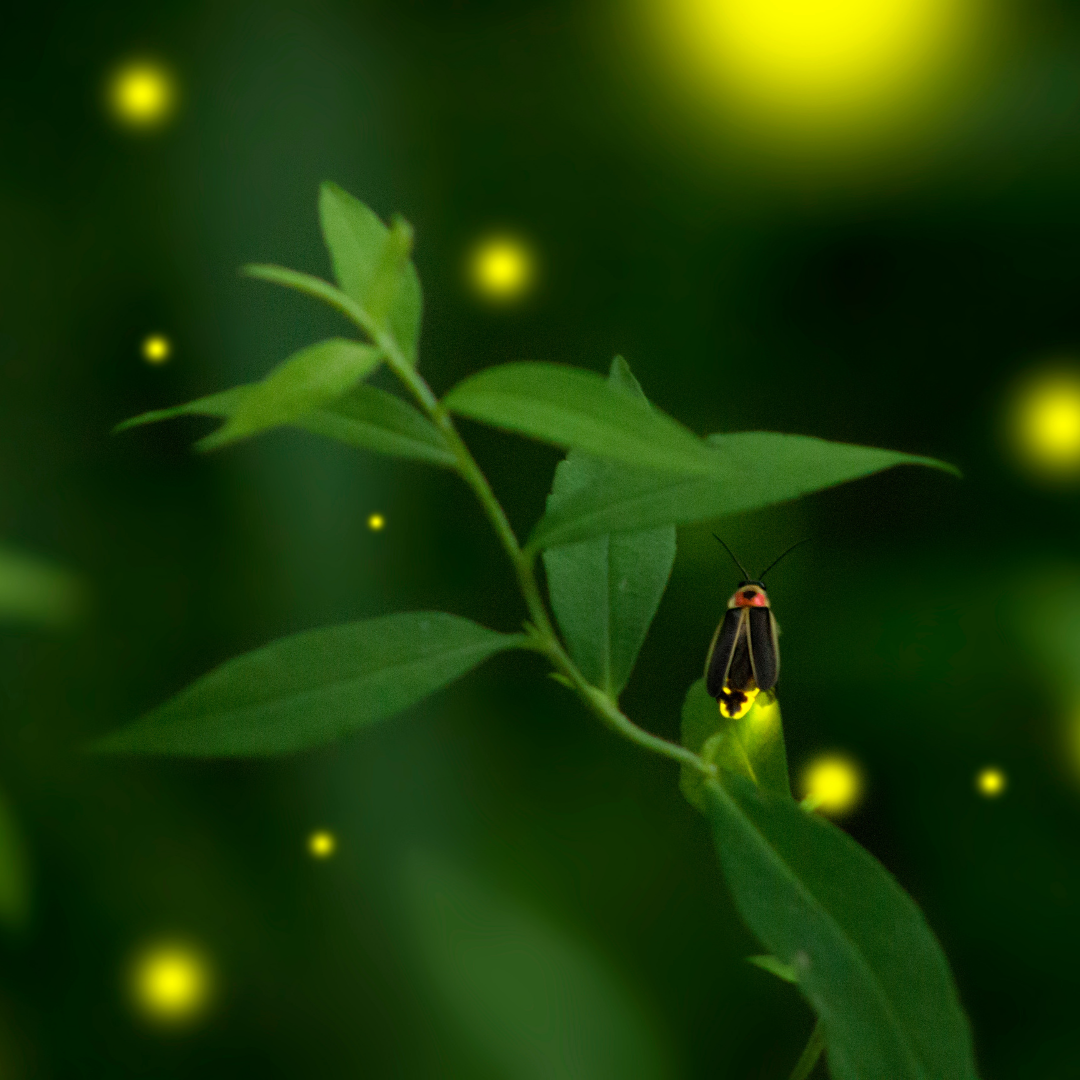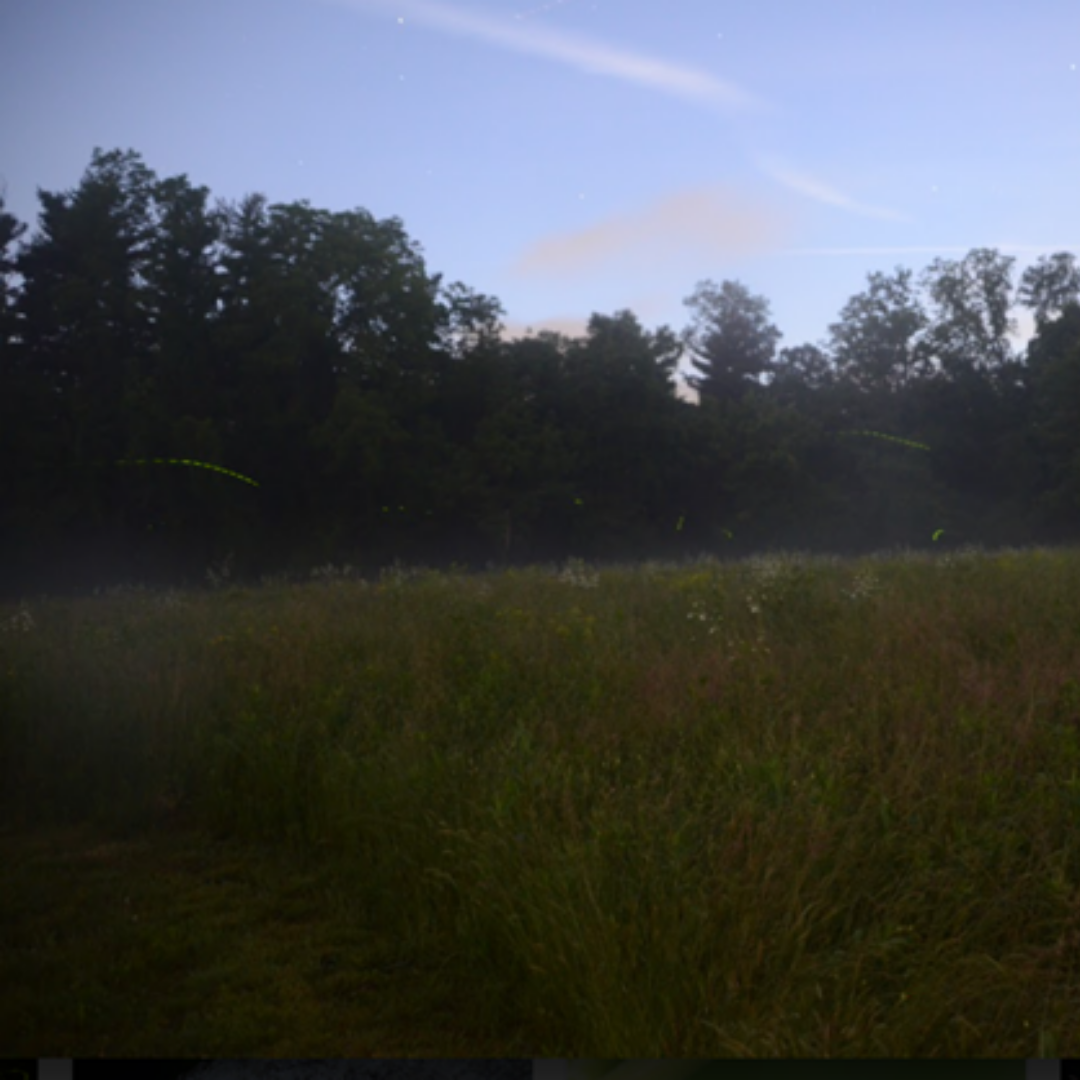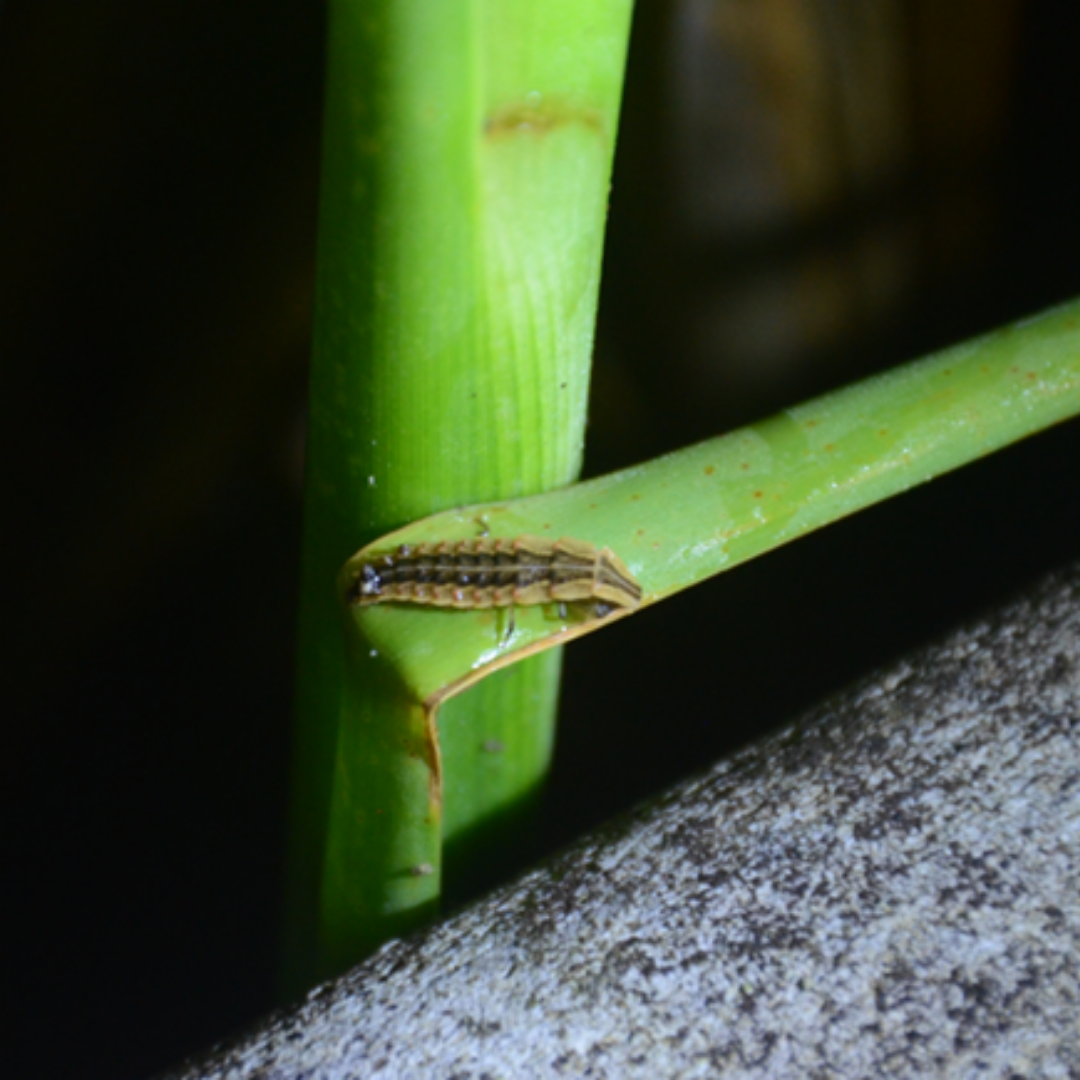Blog
Flashes in the Night

by Linda Romine
As dusk approached on the evening of May 19, a small group of volunteers gathered and walked into the forest near Lotus Pond. They searched the trees and saw... nothing. They then walked to the cabin field and again saw nothing. Not even in the trees bordering the field.
Disappointing? No, the group wasn’t expecting to see what they were searching for. At least not yet. But, as the sky grew dark, they again entered the now pitch-black forest and spied small orange flashes amongst the new leaves in the tree tops. Ohio’s earliest fireflies were flashing!
And the Cincy Nature Firefly Watchers were counting them.

Firefly Watch is a community science project where volunteers count the number of firefly flashes they see in three 10 second counts taken from the same spot each week. Data about weather, habitat, and light sources are also recorded. Simple enough for you to do in your own backyard. So simple, hike leaders successfully encouraged guests to gather data during public firefly hikes.
But I wanted more.
Ever since I had attended an awesome weekend workshop about fireflies, I had dreamed of starting up a survey of fireflies found at Rowe Woods, and using the Firefly Watch protocol was a perfect fit. We chose three habitats (forest interior, field and forest margin), and conducted counts before and after dark at each location. In between the first and second sets of counts, we walked trails through various habitats searching for fireflies.
Because this was a brand-new volunteer activity, we faced a few challenges. Unlike monitoring nest boxes, counting butterflies, or searching out monarch larvae which can be done without staff supervision, our project takes place after gates have closed. Thankfully, Sheila Riley, a naturalist at the Nature Center, was gung-ho at getting this project off the ground.
Finding sites with fireflies but not light pollution turned out to be more challenging than expected, and I dragged the group from one forested location to another as we worked through the process of finding the best sites. What seemed perfect before dark turned out to be flooded with light from parking lot and building lights after dark. A spot that seemed ideal for fireflies didn’t seem to have any.
By the end of fourteen weeks of surveying, we found the best spots. That’s right, fourteen weeks, three sites twice a night with three counts each for a total of 252 counts!
So, what did we discover? Flash trains, ethereal glows, and enchanting flickers and flashes from Four Flashers, Twilight Bush Babies, Christmas Lights and July Comets among others. In all, we recorded nine species, including two that had not been recorded at Rowe Woods before: Marsh Flicker and Marsh Imp.
On June 23, we made an unexpected discovery. Sheila spotted something glowing in the leaf litter. It was a firefly caught by a harvestman. But something looked different.
Upon closer inspection, the firefly turned out to be a Woodland Lucy, a diurnal species that does not flash. But this one glowed – a rare occurrence for this species.

When asked what they enjoyed most, the group said being at the Nature Center after dark serenaded by frogs and katydids, and watching bats swoop across the fields while counting flashes in the night were experiences that stood out.
The group was surprised by how many species of flashing fireflies we found and did not expect them to be so particular about when or where they were active. For example, Twilight Bush Babies start flashing in the forest before sunset, but are done after dark. They were found only in the forest, but you won’t find them until late June. However, Marsh Flickers only flash after dark over wet meadows, never in the forest, and only in late spring.
NOT surprising was the sheer number of fireflies flashing like an electrical storm after dark in late June. This spectacle is what most people envision when they think of fireflies. We were treated to this show and so much more!
By late July, it became clear the number of fireflies was waning fast, and our last count was on August 18. As we wrapped up this inaugural season, Cincy Nature Firefly Watchers stopped to observe glowing firefly larvae at Matt’s Pond—promising nature’s fireworks will light up over fields and forests next year. We can’t wait to count them!